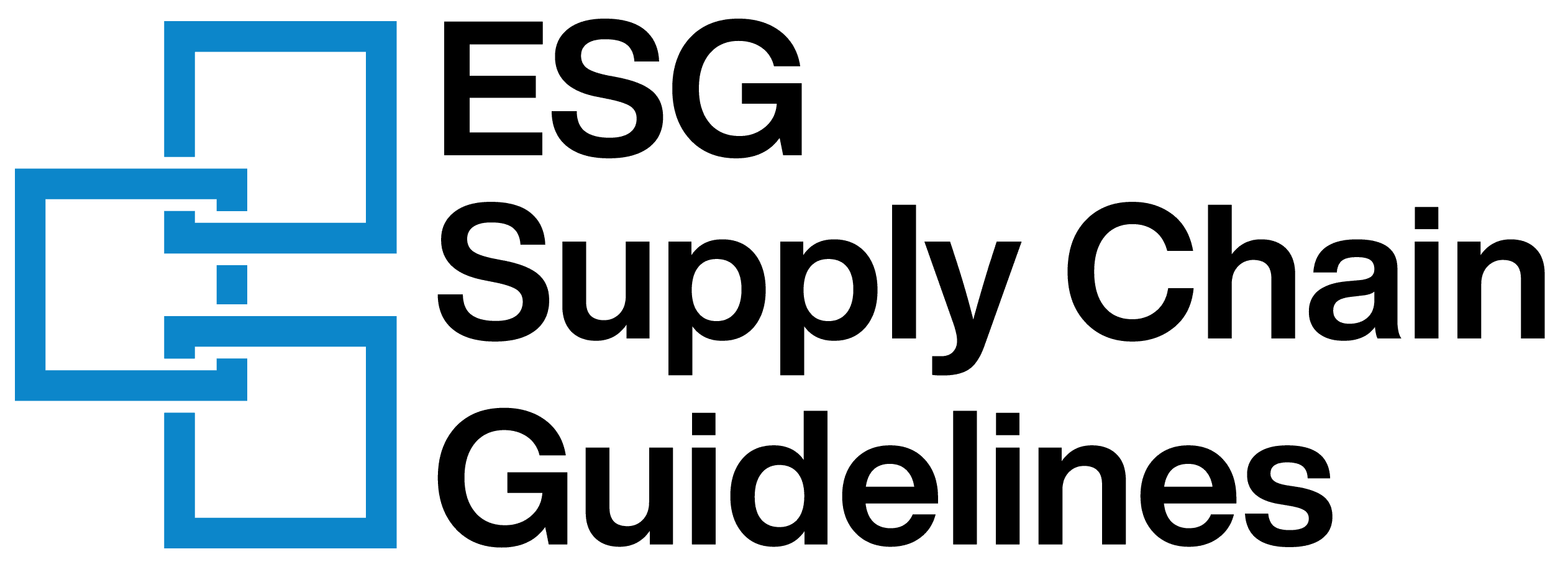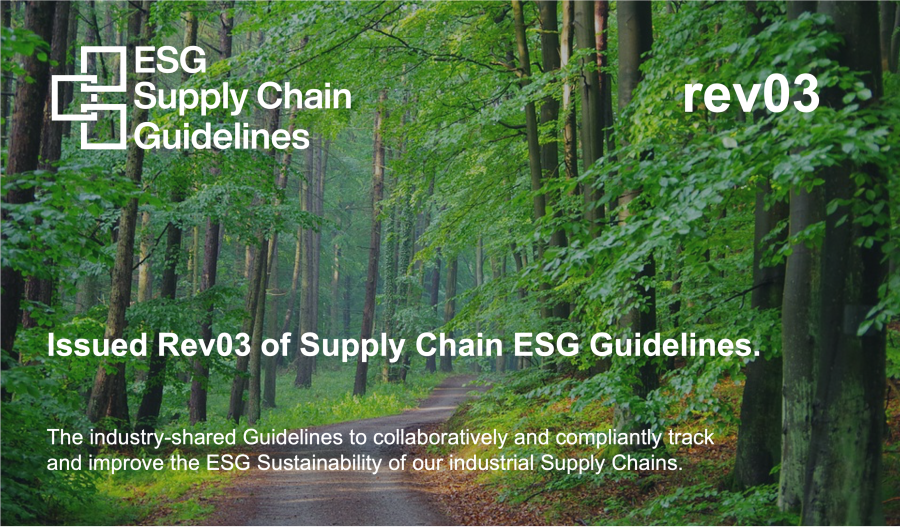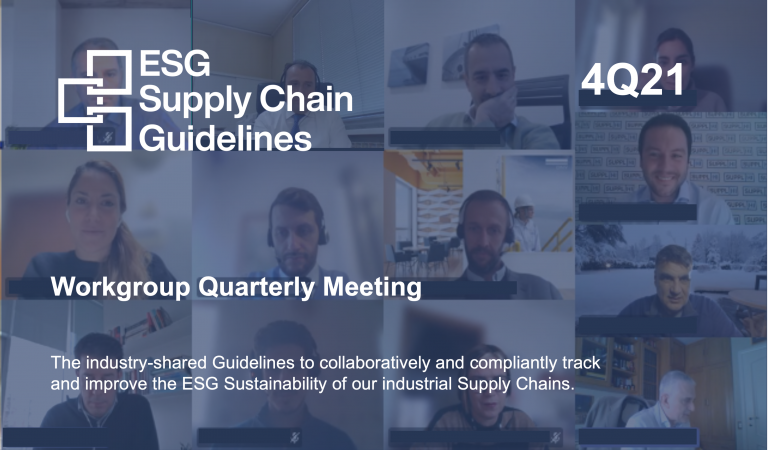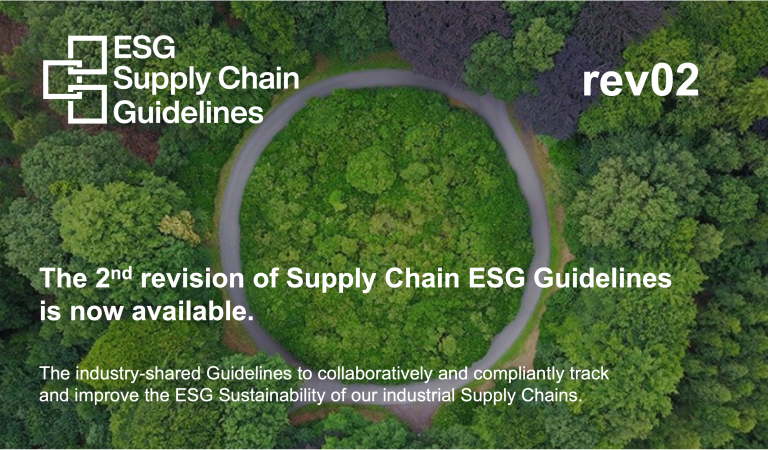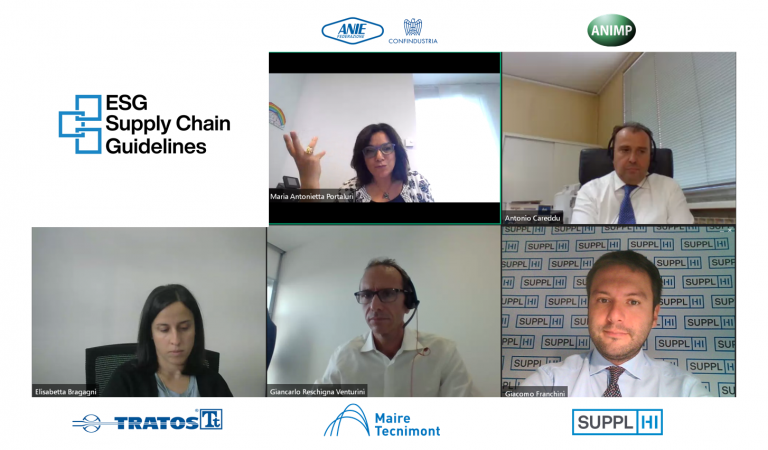In February 2022, the third revision of the ESG Guidelines for the B2B Industrial Supply Chain was officially released on this website, four months after the issuance of the second revision.
The third revision will be the object of thorough discussion during the first quarterly meeting of the industry-wide workgroup of 2022, set for March 18th.
Keeping faith to one of the core principles on which the Guidelines are based, i.e., to constantly reflect the latest international requirements and standards, as well as to include all considerations brought forward by the players involved, revision 03 presents major changes compared to the previous editions on different topics: an analysis of the latest forces driving sustainability, revision of questions, introduction of new sub-areas, creation of new templates.
Sustainability driving forces
The third issuance of the ESG Guidelines reflects the influence of four major forces driving sustainability in the supply chain, namely:
- Reporting and commitments. Companies of increasingly smaller sizes are requested to provide full disclosure and public reports on the commitments taken to improve their own sustainability level as well as that of their supply chain.
- International laws. More and more international regulations addressing supply chain sustainability are being proposed and approved globally. One of the latest ones is the European Commission’s Directive proposal on corporate sustainability due diligence, approved on February 23, 2022. The long-waited proposal, preceded by the 2021 German LkSG Act on the same matter, is a further step in the ever-evolving path towards sustainability in the supply chain, addressing over 15,000 companies of large dimensions (in some high-risk sectors, even companies with a turnover of more than €40 million and 250 staff).
- Green Finance. Financial institutions have a growing need to deliver Sustainable Finance to support the Vendors in their path towards the achievement of a higher level of sustainability and a subsequent need for identifying and monitoring the initial level of a vendor’s sustainability in a standard and widely recognized way.
- Customer Experience. Issues of transparency and due diligence are being requested not only from a legislative point of view but also from direct customers, whose awareness is constantly increasing and embracing formerly ignored aspects.
Questions: Revision & Addition of new ones
One of the first steps taken while drafting the new revision, was the fine-tuning of the wording used in the existing questions, leveraging on the answers provided by the participating suppliers. This exercise was an important step to clarify and further support suppliers in the completion of the industry-shared questionnaires, with an eye to inclusiveness and widespread adoption.
Moreover, 15% of the existing questions were modified (adding new options to the selection list, changing the type of selection offered, adding a comment area) when compared to the previous revisions.
Almost 50% of new questions were added to the overall list of existing questions, and of course redistributed according to the appropriate templates, reaching a total of 167 questions, compared to the 113 questions present in the first two revisions.
The new questions target mainly environmental and governance areas that, upon internal discussions within the industry-wide workgroup, were deemed to be assessed in more detail. For the environmental area, the sub-areas that were expanded the most were Energy Efficiency and Energy Sources, Water and Waste Management, GHG Emissions, Chemicals and Materials, Biodiversity & Ecosystems. For governance, instead, Ethics, Responsible Information Management, and Sustainable Procurement
Sub-Areas
One of the most important changes introduced in the third revision of the industry-shared ESG Guidelines is the unification of the Health & Safety section to the Social area, which now accounts for 7 sub-areas, 3 of which are dedicated to Health & Safety issues.
The -now- three main areas of sustainability addressed in the Guidelines – Environmental, Social, Governance, are subdivided into a total of 1sub-areas, with 9 sub-areas for the Environmental section and 3 for the Governance one.
The new classification of questions into more precise sub-areas was pivotal for the restructuring of the eight Standard Templates, which are created to ensure that relevant sets of questions are addressed to the appropriate industry, so as to obtain more meaningful scores and allow for comparisons of scores within the same category of supply.
Standard Templates
The restructuring of the Standard Templates also represents a major upgrade from the previous revisions, as it capitalized the different inputs received from both the internal players of the workgroup with the evidence emerging from the analysis of the >3,300 questionnaires filled in by suppliers.
The Standard Templates are now 8 – as compared to the previous 6 – and reflect a more mature approach to sustainability, classifying vendors into Manufacturing, Re-selling, Chemical, Construction and Fabrication, Logistics, Engineering, Digital, Professional and other services.
As in the previous versions, the workgroup leveraged on the SupplHi Standard Categorization to link categories of supply to the appropriate Standard Template.
Next Steps
Similarly to what happened in the past, the transition from the second to the third revision is being managed on the SupplHi platform in the dedicated module ESG Meter and will be completed in the following months.
Vendors are always provided with the latest version of the ESG Guidelines, ensuring transparency on all actions performed, and are automatically notified in case the new revision introduced new questions for their specific category of supply. Moreover, the previous revision of the scores is maintained visible until the Vendor completes all the new requirements.
